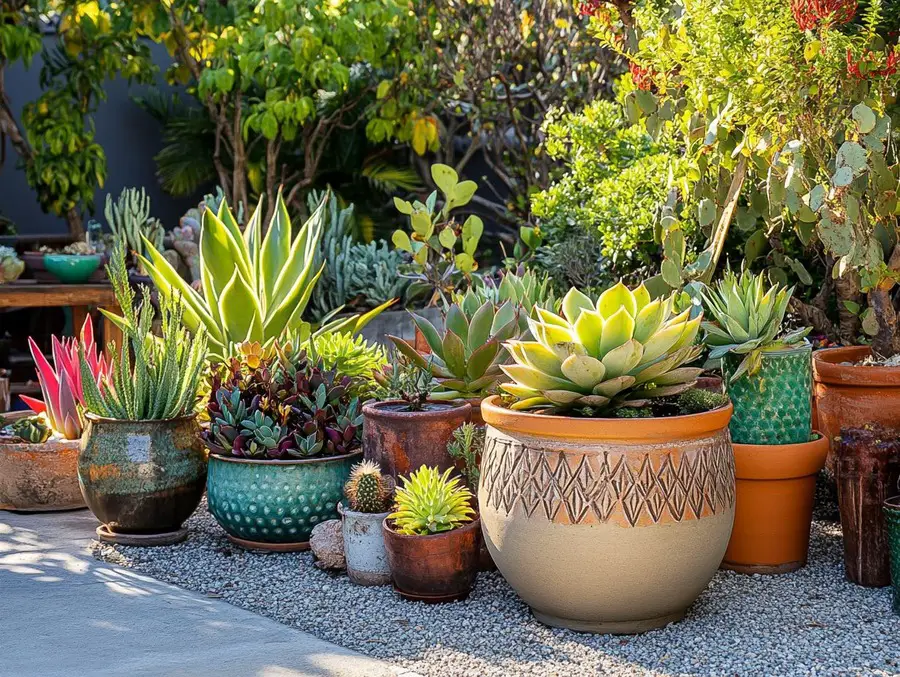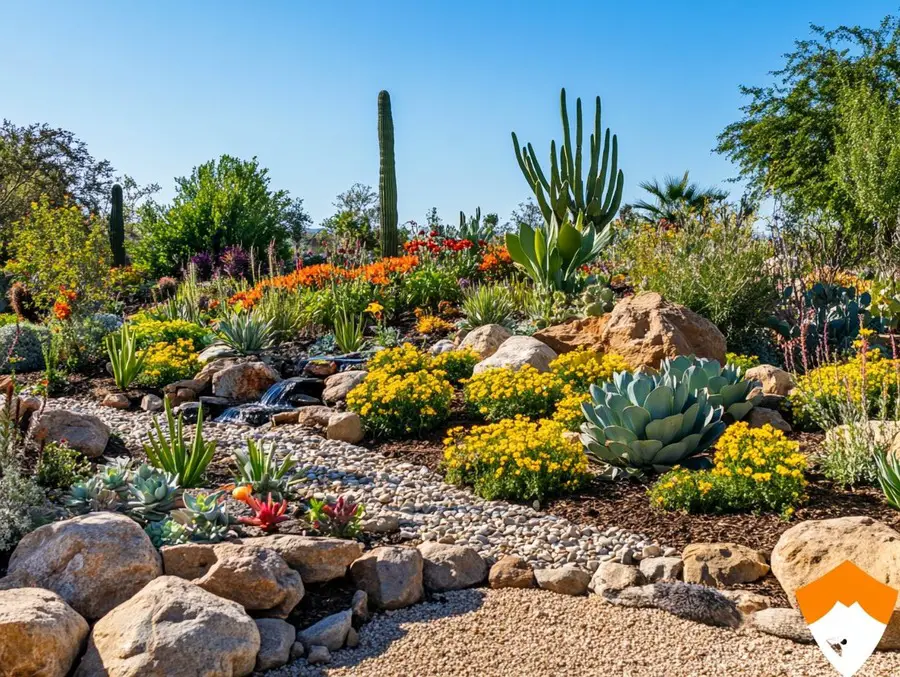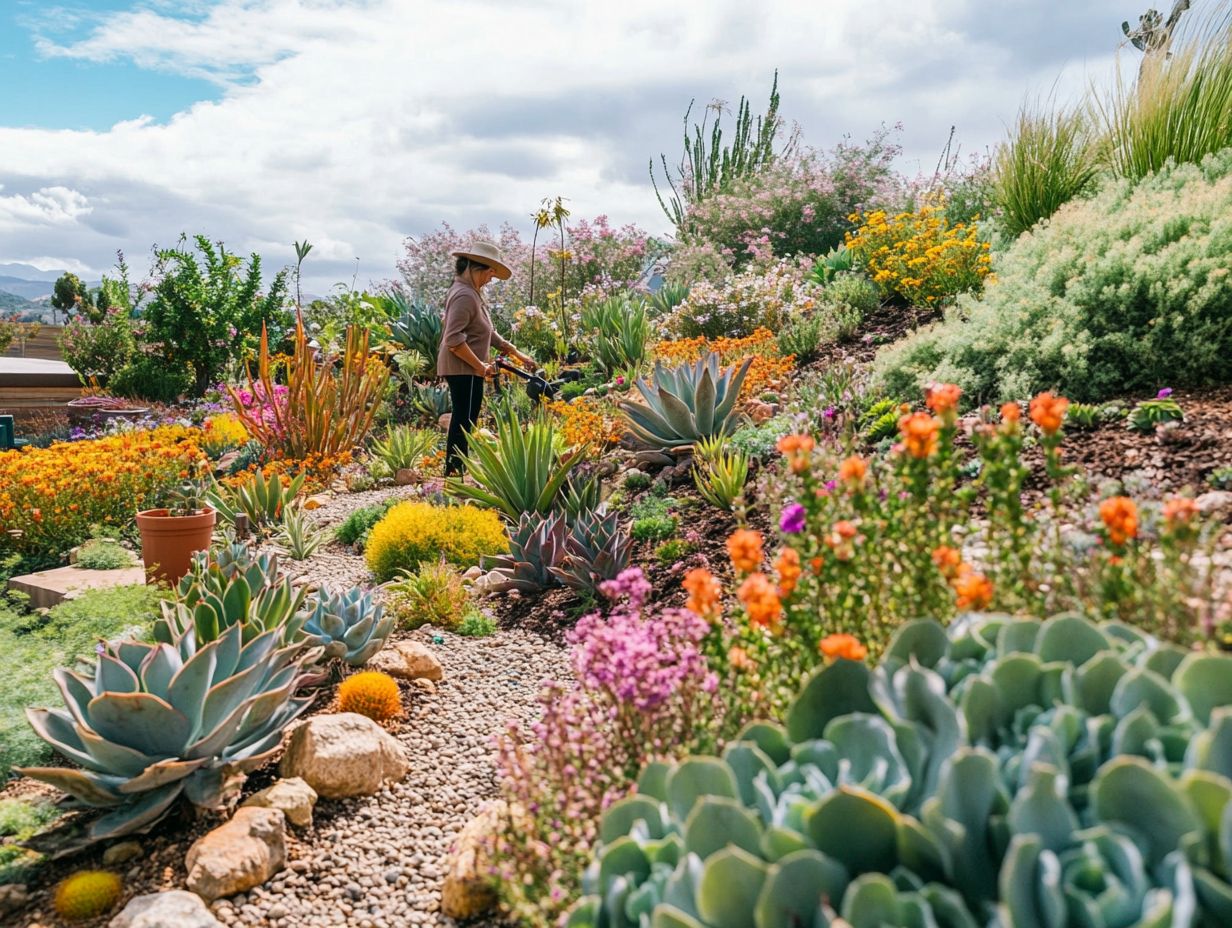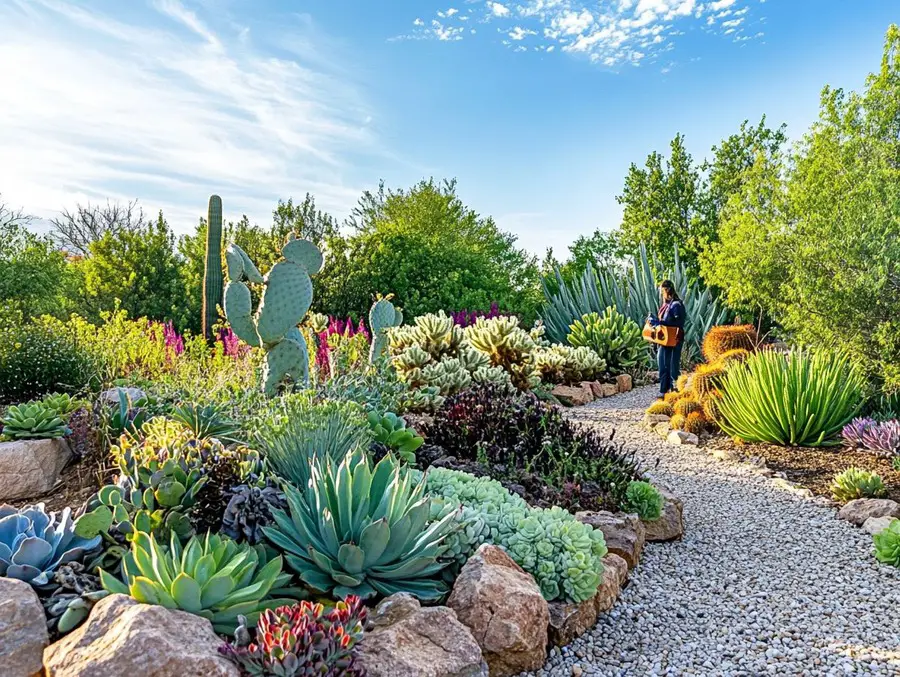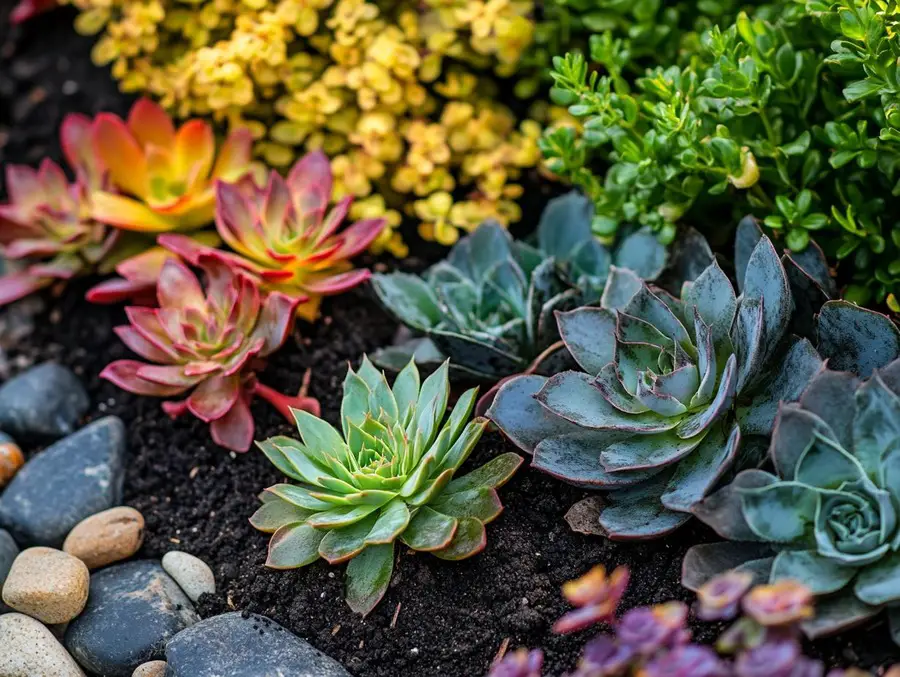We use affiliate links. If you purchase something using one of these links, we may receive compensation or commission.
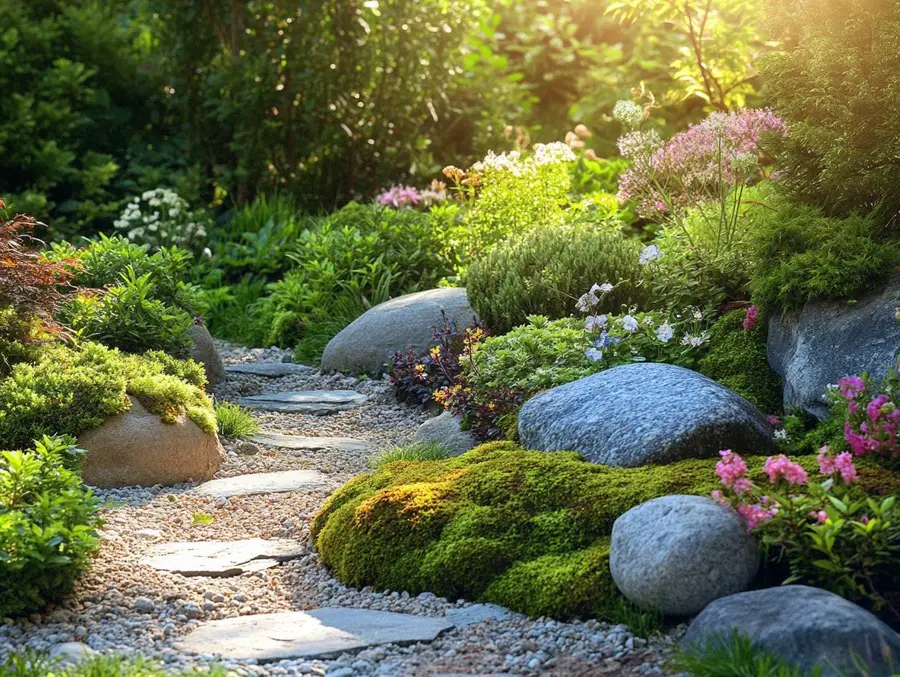
Starting a Rock Garden is a fantastic way to create a unique, low-maintenance landscape that thrives in dry conditions.
Tired of struggling with high-maintenance flower beds?
Traditional gardens require constant watering and upkeep, but rock gardens offer a stunning, eco-friendly alternative.
With the right plants and design, you can build a rock garden that’s both beautiful and effortless to maintain!
Starting a Rock Garden Key Takeaways
- Starting a Rock Garden involves selecting a sunny, well-drained location, choosing drought-tolerant plants, and arranging rocks for a natural look.
- Use a mix of large stones, gravel, and hardy plants like succulents and alpine flowers.
- Proper soil preparation and strategic placement ensure a low-maintenance, visually appealing garden that thrives in dry conditions.
Starting a Rock Garden: Simple Steps for a Beautiful Yard
Transforming your outdoor space with a rock garden can be an incredibly rewarding and visually stunning project.
This guide is here to help you explore the essentials of creating your very own rock garden, starting with understanding what it is and its purpose, all the way to choosing the perfect location.
You’ll learn about the design process, including layout and plant selection, and the necessary preparations and building techniques you’ll need.
We’ll also cover ongoing maintenance tips and highlight common pitfalls to avoid, ensuring your rock garden flourishes for years to come.
Dive in and discover how you can bring this unique landscaping feature to life!
What is a Rock Garden?
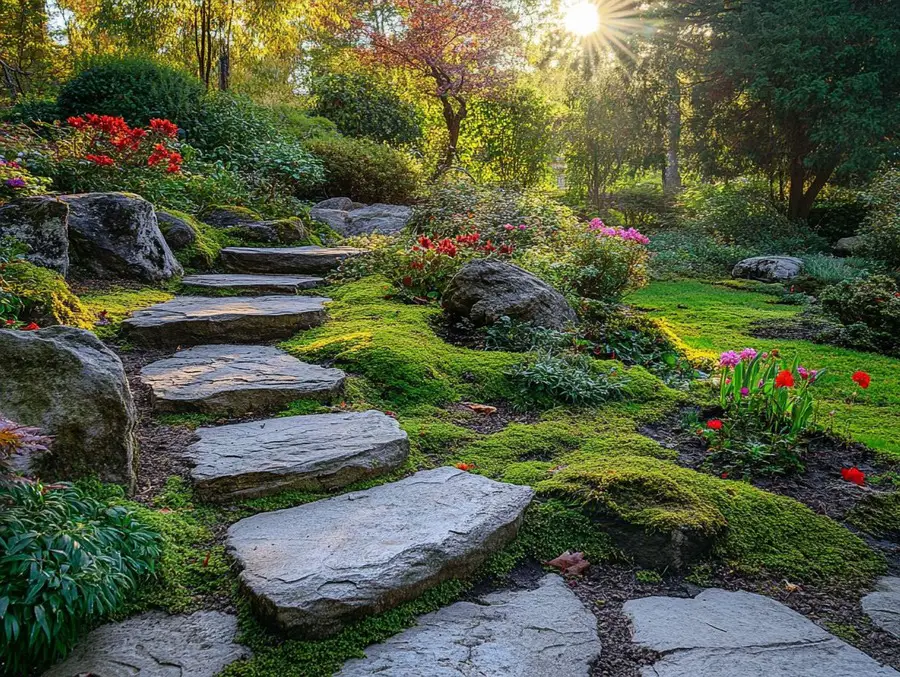
A rock garden is a fantastic landscaping feature where you can mix different rocks, gravel, and carefully chosen plants to create a visually stunning and ecologically diverse space.
You can include alpine plants, succulents, and other drought-tolerant varieties, giving you the chance to show off your creativity while managing soil drainage and enjoying some environmental perks.
Rock gardens can turn into little microclimates, offering the perfect growth conditions for native plants and decorative stones.
Definition and Purpose
The purpose of a rock garden is to create a visually appealing and sustainable environment that showcases the beauty of nature through the thoughtful arrangement of rocks and plants, especially native ones that boost biodiversity.
These gardens aren’t just eye candy. They also mimic natural ecosystems and provide habitats for various wildlife.
By focusing on indigenous plants, rock gardens help you build resilience against local pests and diseases, meaning you can cut down on chemical interventions.
They also contribute to soil stability and conserve water, making them perfect for areas that deal with drought.
By emphasizing biodiversity, these spaces allow for a harmonious coexistence of plants and animals, improving environmental health while offering you valuable lessons about sustainable practices.
Ultimately, rock gardens are a fantastic example of how landscaping can harmonize with ecological principles to foster thriving ecosystems.
Choosing the Right Location
Choosing the right location for your rock garden is essential if you want your alpine plants and succulents to flourish.
You’ll want to think about things like how much sunlight they’ll get and what kind of soil is best for them.
The perfect spot should also consider accessibility, visibility, and any unique microclimates in your outdoor space.
This way, you can plan your garden effectively and create a stunning landscape.
Factors to Consider
When you’re picking the perfect spot for your rock garden, think about things like sunlight exposure, soil types, and how to control erosion.
These factors will seriously affect the health and beauty of your garden.
Each of these elements is key in deciding which plants will thrive in your unique setup.
For example, taking a look at sunlight patterns throughout the day will help you choose between plants that love full sun or those that can handle a bit of shade.
It’s also important to understand the different soil types, whether it’s sandy, clay, or loamy, since each plant has its own requirements for thriving.
Identifying any potential microclimates, those little areas with their unique climate can guide you on where to position more delicate plants that need a bit of extra warmth or protection.
All of this will contribute to a rock garden that’s not just vibrant but also resilient.
Designing Your Rock Garden
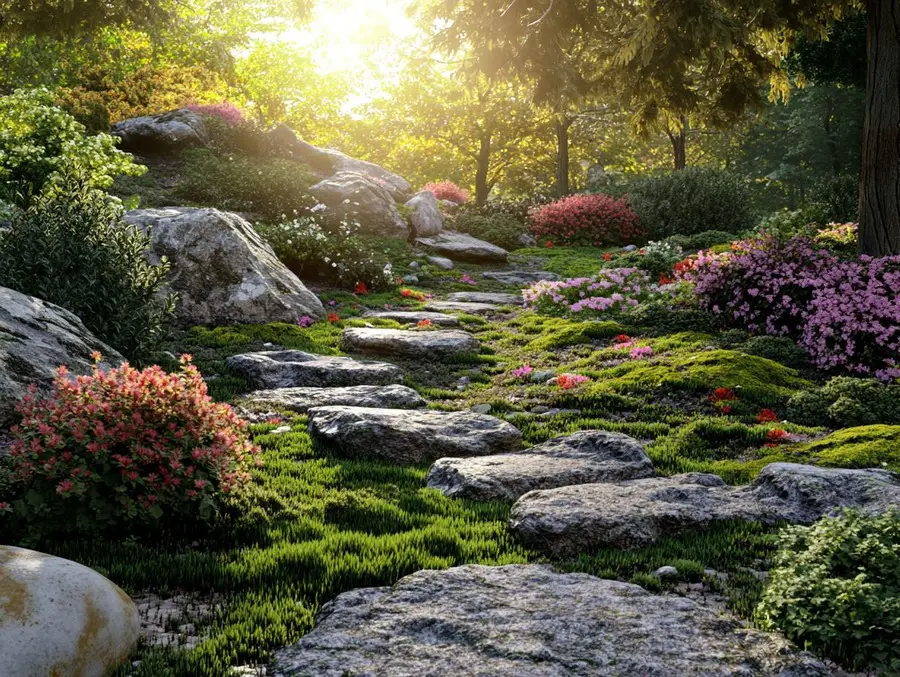 When you’re designing your rock garden, you’ll want to think carefully about the layout, the stones you choose, and the types of plants you want to include, like drought-tolerant varieties and herbaceous perennials.
When you’re designing your rock garden, you’ll want to think carefully about the layout, the stones you choose, and the types of plants you want to include, like drought-tolerant varieties and herbaceous perennials.
By putting together a thoughtful design, you can really boost the aesthetic appeal of your outdoor space.
It helps to ensure that everything works together beautifully, from the decorative rocks to the seasonal interest in your plant choices.
Layout and Plant Selection
The layout of your rock garden is super important for its overall success, especially when it comes to choosing plants.
You’ll want to prioritize drought-tolerant plants that thrive in your specific conditions and complement each other through companion planting.
To create a harmonious design, think carefully about how you arrange the rocks, plants, and pathways.
Placing larger stones strategically can help create focal points and provide some structure to your garden.
Mixing up textures and heights will enhance visual interest all year round.
Don’t forget about seasonal changes. Pick plants that bloom in different seasons so your garden stays colorful and vibrant throughout the year.
Pathways can guide visitors through your garden, making it more inviting and encouraging them to explore the carefully curated color schemes that reflect the natural beauty of your landscape.
Preparing the Site
Preparing your site for a rock garden is a crucial step. You’ll want to clear away any unwanted debris, level the area, and make any necessary soil amendments to ensure proper drainage and promote plant growth.
This careful prep work doesn’t just make your garden look good.
It also helps control erosion and provides a solid foundation for the rocks and plants in your design.
Clearing and Leveling the Area
The first steps in getting your rock garden site ready involve clearing away any debris and leveling the ground to create a solid base for your rocks and plants.
This helps ensure that you have the right soil types and proper drainage.
Taking the time for this meticulous process is super important for controlling erosion and keeping your plants healthy.
By removing unwanted materials like weeds, big rocks, or fallen branches, you’ll make it easier to access the soil and make sure those essential nutrients are available.
Leveling the ground helps you tackle uneven surfaces but also improves water runoff, which reduces the risk of erosion and promotes better drainage.
Different soil types, like sandy, loamy, or clay soils require various site preparation techniques to create the best conditions for growth.
So, it’s essential to assess those soil characteristics to customize your approach and make sure your rock garden thrives in the perfect environment.
Building the Rock Garden
Building your rock garden means picking the right materials, like different types of rocks and gravel.
You’ll also want to use some effective techniques for placing the rocks and adding hardscaping elements like garden borders.
By thoughtfully creating these physical features, you can improve the accessibility of your garden and make sure it fits perfectly with your overall design vision.
Materials and Techniques
Choosing the right materials and building techniques is key to creating a successful rock garden.
The types of rocks and gravel you select will really influence both how it looks and how well it works.
The right stones can turn a bland area into a stunning focal point, they help with natural drainage and provide a home for various plants.
If you want to boost the visual appeal, think about adding boulders, cobblestones, or decorative gravels to create eye-catching pathways and borders.
Layering rocks of different heights can add depth to your garden, and using garden tools like trowels and shovels will help you get everything placed just right.
By understanding these choices and using proper hardscaping methods, you can ensure that your rock garden is beautiful and also sustainable for growth.
Maintenance and Care
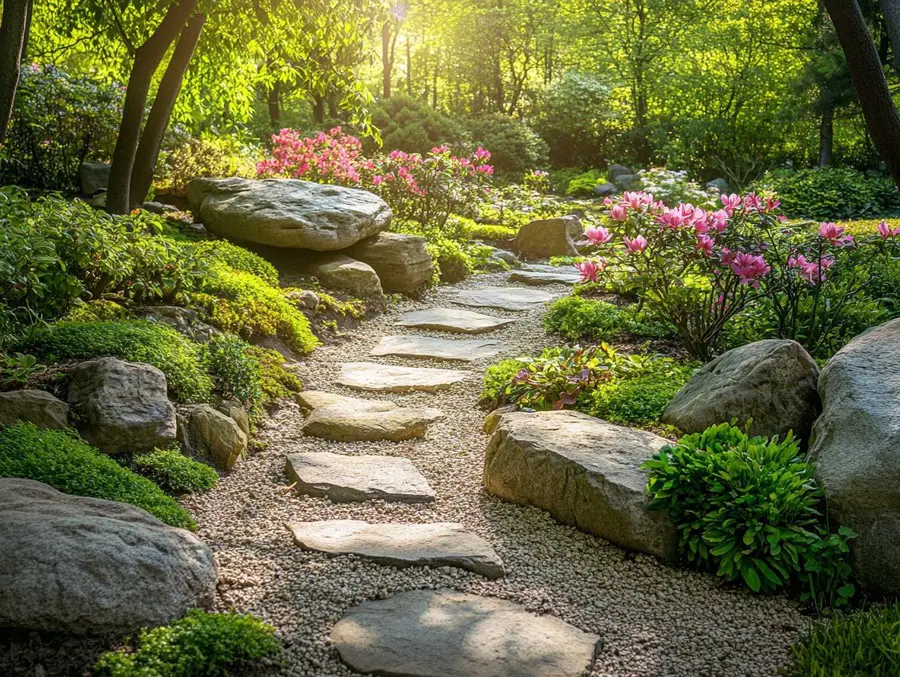
Regular maintenance and care are key to keeping your rock garden healthy and beautiful.
This means you’ll want to stay on top of tasks like watering, weeding, and composting to enrich the soil.
By following a consistent maintenance schedule, you can help your alpine plants and succulents thrive while keeping garden pests and plant diseases at bay.
Keeping Your Rock Garden Healthy and Beautiful
To keep your rock garden looking healthy and beautiful, you need to stick to some regular maintenance practices like proper watering, soil amendments, and pest control.
These are key for the longevity of your plants.
Taking a systematic approach to garden care means closely monitoring soil conditions to keep them well-drained and nutrient-rich, which is super important for all the different plant varieties in your garden.
Using organic fertilizers can give your plants the nutrients they need to thrive while also boosting the overall health of the soil.
If you focus on natural pest control methods, you can protect your plants without the nasty side effects of synthetic chemicals.
By being proactive with these maintenance tasks, you’ll make your rock garden look great and also support the ecosystem, making it more resilient against pests and diseases.
Common Mistakes to Avoid
To create a thriving rock garden, you really need to watch out for some common mistakes that a lot of gardeners make.
These include things like choosing the wrong plants, overwatering, and forgetting about weed control.
Once you understand these pitfalls and follow a few simple tips, you’ll be well on your way to crafting a sustainable and vibrant outdoor space that truly reflects your passion for gardening.
Tips for Success
Successful rock gardening is all about knowing the common mistakes to avoid and picking up some practical tips.
You’ll want to focus on proper plant selection, keeping a solid maintenance schedule, and using the right garden tools.
When you set up a well-curated rock garden, you can turn any outdoor space into a stunning, low-maintenance oasis that thrives in different climates.
It’s super important for you to start your gardening journey armed with information about the best plant varieties, since your choices can really impact the overall look and health of the garden.
Do some research on drought-resistant species, native plants, and ground covers that work well with rocky terrain.
Investing in quality gardening tools like trowels, pruners, and soil testers will make the whole gardening process a lot smoother.
And don’t forget to create a sustainable maintenance plan that takes seasonal changes into account, so your rock garden stays vibrant all year round.
Frequently Asked Questions
1. Can I start a rock garden in any type of soil?
Yes, you can start a rock garden in any type of soil as long as it is well-draining.
However, if your soil is heavy or clay-based, it may be helpful to amend it with sand or gravel for better drainage.
2. What is the best time of year to start a rock garden?
The best time to start a rock garden is in the spring or fall when temperatures are mild.
This will give your plants time to establish their roots before extreme weather conditions occur.
3. How much sunlight does a rock garden need?
Most rock garden plants thrive in full sun, so it is important to choose a location that receives at least 6 hours of direct sunlight per day.
However, some plants may also do well in partial shade, so be sure to research the needs of your specific plants.
4. Do I need special tools or equipment to start a rock garden?
Starting a basic rock garden can be done with basic gardening tools such as a shovel, rake, and hand trowel.
However, if you are working with larger rocks or creating a more intricate design, specialized tools such as a pick or chisel may be helpful.
5. How often do I need to water my rock garden?
The frequency of watering will depend on the specific plants in your rock garden and the climate in your area.
Generally, rock garden plants do not require frequent watering and can tolerate drier conditions.
It is important to monitor the soil moisture and adjust your watering schedule accordingly.
6. Can I add other elements besides rocks to my rock garden?
Absolutely! While rocks are the main feature of a rock garden, you can also incorporate other elements such as gravel, pebbles, and driftwood to add visual interest.
Just be sure to choose elements that complement the overall design and do not overshadow or overcrowd your plants.
Best Plants for Xeriscape Gardens: Hardy & Beautiful
Xeriscape Garden Styles: Easy Low-Maintenance Options
Xeriscape Gardening Techniques: Easy Low-Water Tips
Xeriscape Garden Design & Layout: Easy Water-Wise Beauty
What is xeriscaping? A beginner’s guide to drought-tolerant landscaping – Colorado State University
Related Content
Visit my Amazon Influencer Page for videos and gardening products Grow Your Own Garden

